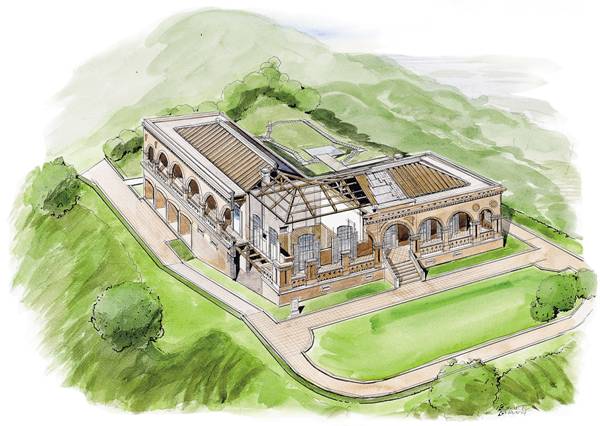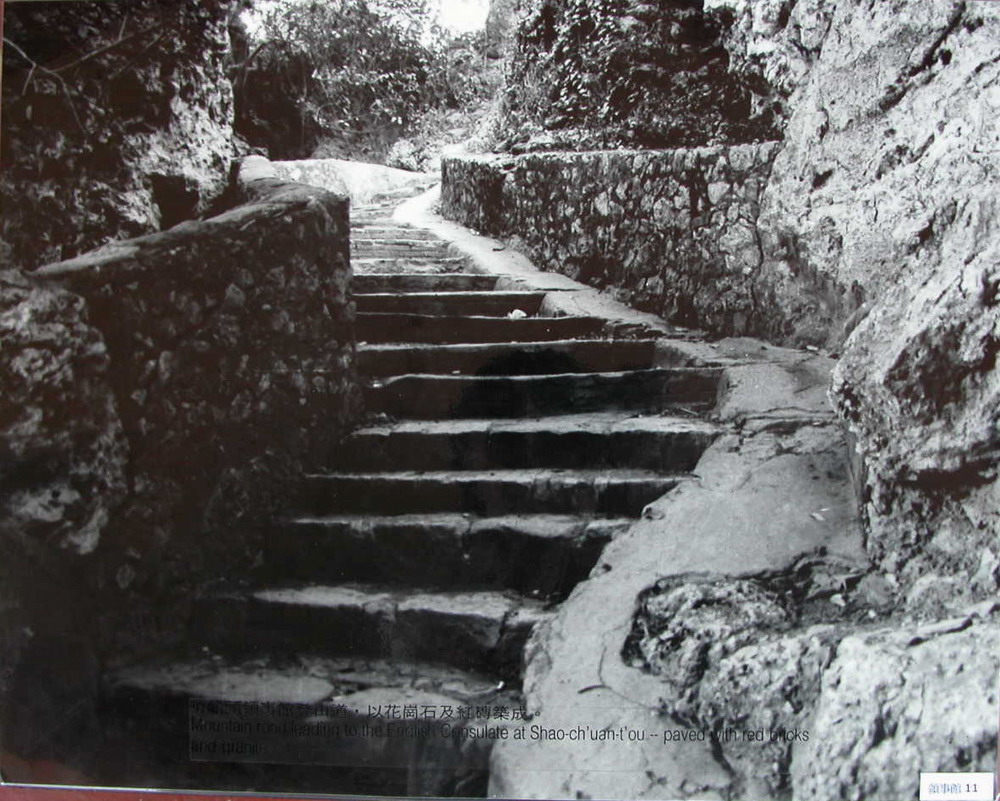The British Consular Residence at Takow
The British Consular Residence at Takow was designed in the Baroque style of the late Renaissance architecture, originally designed by a British architect. British measurements such as yards were adopted. The overall structure of the building is surrounded by the recurrent semicircular arches of the outer walls. To reinforce the structure at the corners, the semicircular arches are smaller, whereas the wall columns are bigger, with double brick columns built in at the corners of the building as well. The rooms were equipped with fireplaces. To accommodate an uneven rocky surface at the foundation, the builders utilized a design split the space of the basement into rooms and space with different ground levels, most of them used as warehouse or storage rooms. Despite the fact that the architect of the building was British, the construction craftsmen were recruited from mainland China. The red bricks for the building were imported from Siamen. The bamboo shaped pipes were a characteristic of western-style building peculiar to the end of the Ching Dynasty.

The British Consulate at Takow
Marshall, the Acting Surveyor at the Office of Works at Shanghai, was the architect of the Former British Consulate at Takow. As a result, the design of the building might have been influenced by colonial styleat Shanghai. Judging from the architectural style, it demonstrates a typical form of colonialarchitecture withveranda and symmetrical façade. The building style is memorial. The overall structure is a ternary form, consist of the roof, body and base. The major feature of the former Consulate is the arcade. There are double columns at the entrances to the veranda at the façade and the corners, while the rest of the columns are in a single form. The columns' design is artistically simple, only decorated with a double astragal molding.
From a design perspective, the veranda is the distinctive feature. The veranda itself not only serves as veranda, but its arches reveal the vocabulary of the style. Without being lavishly detailed or decorated, the consulate's simplicity of design stands out as the highlight. The building records the architectural form of the time and underwent changes during the Japanese colonial period. It is a memoir which vividly documents the development of Taiwan colonial architectural style, such as the architectural techniques and trends. It plays an important role in the architectural history of Taiwan.

The hiking trail
The hiking trail primarily comprises stone steps and low walls. The elevation difference between the highest step and the lowest step is 29 meters. Presently there are 127 steps. The width of the trail is between 130 and 200 centimeters. The depths of the steps are between 14 cm minimum, to 350 cm maximum. The heights of the steps are between 10 and 30 cm.
The primary materials used for the steps are bricks and stones. Foot bricks are incorporated occasionally to adjust the height of the steps. The main type of stone that was used is granite, which might have been the granite that was used as ballast. Takow's local coral stones (limestone) were also occasionally utilized as well. Three types of masonry were employed for the steps: stone, mixed stone and brick, and brick. The way of implementing stone masonry is to place a row of larger stones on the level surface and then fill up the space with gravel on the back side. There are three methods of mixed stone and brick masonry based on the employed positions. 1) to place a larger stone on the level surface and then fill up with bricks on the back; 2) bricks laid on the flat side forming a level surface with a stone or stones underneath 3) bricks laid on end forming a level surface with a stone or stones underneath. There are various ways of constructing brick-masonry steps, depending on the depths of the steps and the ways that the bricks are arranged.
